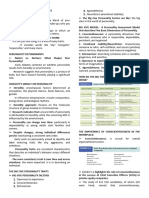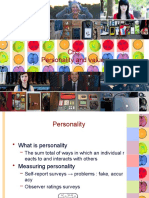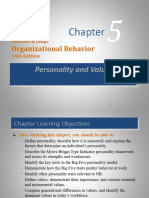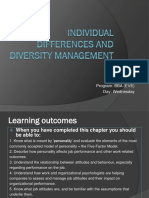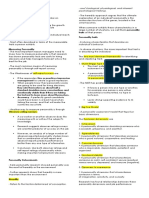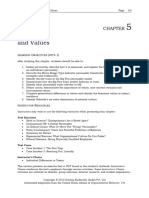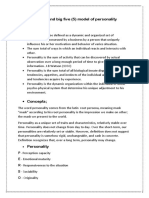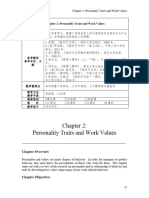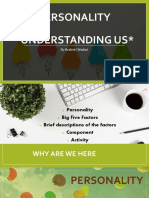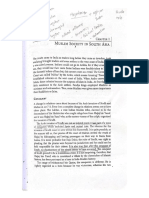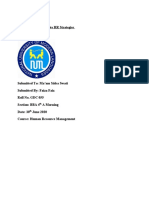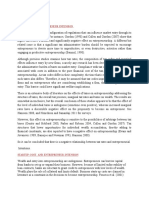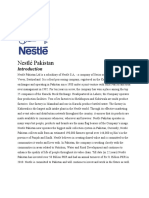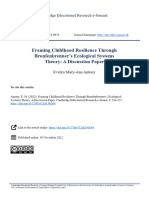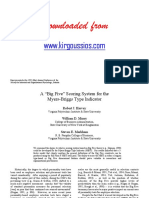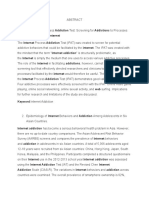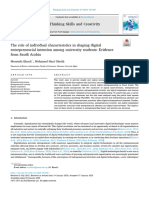0% found this document useful (0 votes)
99 views7 pagesOb Assignment 2
The document discusses personality measurement and the Big Five personality model. It provides definitions of personality and describes methods of measuring personality traits through self-reports and other assessments. It also explains the Big Five personality dimensions of Openness, Conscientiousness, Extroversion, Agreeableness, and Neuroticism and how human resources professionals use this model to help place employees. Conscientiousness and Agreeableness are found to be the traits most closely associated with overall job performance.
Uploaded by
Yasmin khanCopyright
© © All Rights Reserved
We take content rights seriously. If you suspect this is your content, claim it here.
Available Formats
Download as DOCX, PDF, TXT or read online on Scribd
0% found this document useful (0 votes)
99 views7 pagesOb Assignment 2
The document discusses personality measurement and the Big Five personality model. It provides definitions of personality and describes methods of measuring personality traits through self-reports and other assessments. It also explains the Big Five personality dimensions of Openness, Conscientiousness, Extroversion, Agreeableness, and Neuroticism and how human resources professionals use this model to help place employees. Conscientiousness and Agreeableness are found to be the traits most closely associated with overall job performance.
Uploaded by
Yasmin khanCopyright
© © All Rights Reserved
We take content rights seriously. If you suspect this is your content, claim it here.
Available Formats
Download as DOCX, PDF, TXT or read online on Scribd
/ 7


